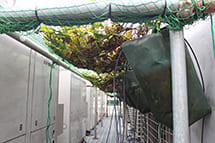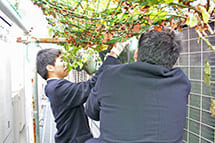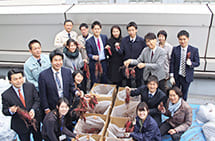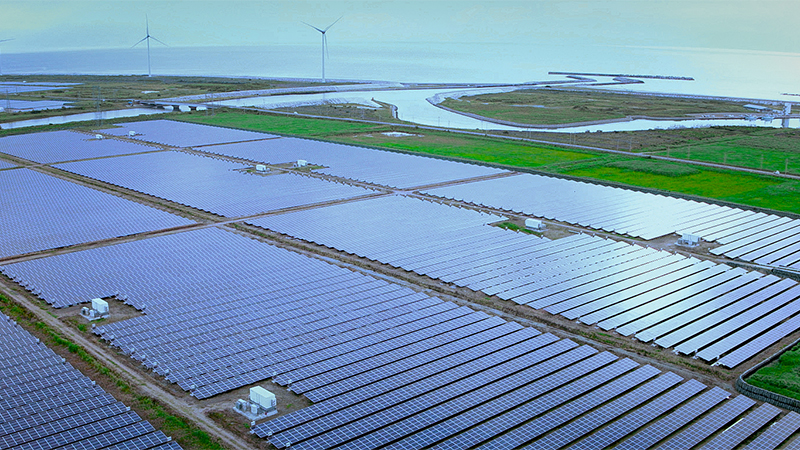Dec. 01, 2016
Sweet potatoes harvested on rooftop of Sumitomo Shoji Mitoshiro Building
On November 16, 2016, a sweet potato harvest festival was held for the fifth time on the rooftop of the Sumitomo Shoji Mitoshiro Building (Kandamitoshiro-cho, Chiyoda-ku, Tokyo). Approximately 50 people attended the event, including students from the nearby Seisoku Gakuen High School and building management staff, harvesting around 200 kilograms of sweet potatoes.

Sumitomo Corporation is engaged in next-generation office development in partnership with Nikken Sekkei Ltd. As part of the initiative, sweet potatoes are cultivated on the rooftop of the building with the aim of both saving energy and rooftop greening. Sweet potato plants are grown in such a way as to cover the outdoor units of air conditioners consolidated on the rooftop. The transpiration of the leaves and the shade they create effectively cool the outdoor air absorbed by the units, increasing air-conditioning efficiency by up to 10% in the summer. Liquid fertilizer and water are automatically supplied to the soil in the sacks in which the plants are grown, ensuring hassle-free cultivation.

"At first, we couldn't believe that sweet potatoes could be harvested in the middle of Tokyo," said one of the students from Seisoku Gakuen High School, "but we are having great fun." The freshly picked sweet potatoes were given out to tenants of the building and steamed in the cafeteria kitchen for festival participants to savor. Last year's harvest was used to brew sweet potato shochu at a brewery in Kumamoto (although not for sale). The shochu is named Itadaki (meaning "top" in Japanese) because its ingredients were cultivated on the "top" of a building. Itadaki is a blend of shochu brewed from these sweet potatoes and others, but one day in the near future, the product may be made purely from sweet potatoes grown on the Mitoshiro Building. Kanda may from then be instantly associated with sweet potato shochu.
Sumitomo Corporation is looking to use sweet potatoes for greening other buildings, aiming not only at enhancing the energy-saving effect of buildings, but also at helping foster local communities.




